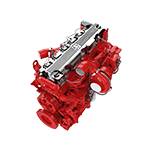Dec . 02, 2024 02:29 Back to list
emergency brake drum
Understanding the Emergency Brake Drum A Crucial Component of Vehicle Safety
The emergency brake drum, while often overlooked in everyday discussions about vehicle safety, plays a pivotal role in ensuring that our vehicles can stop effectively in critical situations. It is an integral part of a car's braking system, specifically designed to provide additional stopping power when the primary brakes fail or when immediate halting is necessary.
What is an Emergency Brake Drum?
The emergency brake drum is part of the vehicle's emergency brake system, commonly known as the handbrake or parking brake. This system uses a drum and shoes mechanism, where the brake shoes are pressed against the inner surface of the drum when the emergency brake is engaged. The resulting friction slows down or completely stops the vehicle. In many modern vehicles, this system is usually found on the rear wheels, although some vehicles may employ a different configuration.
The Importance of the Emergency Brake Drum
The primary function of the emergency brake drum is to provide a backup means of stopping the vehicle in the event of a failure in the primary braking system, which relies on hydraulic force. This redundancy is crucial not only for everyday driving but also for safely parking on inclines. The emergency brake ensures that even if the main brakes lose pressure due to a hydraulic leak or other malfunction, drivers can still bring the vehicle to a stop.
Moreover, in the context of parking, engaging the emergency brake prevents the vehicle from rolling away, particularly on slopes. It is a crucial safety feature for both the driver and pedestrians, reducing the risk of accidents caused by unaffixed vehicles.
Maintenance of Emergency Brake Drums
emergency brake drum

Like all mechanical components, the emergency brake drum requires regular maintenance to ensure optimal performance. This includes routine inspections, which can help detect wear and tear early on. Factors such as dust, debris, and moisture can accumulate on the drum, leading to reduced effectiveness. As such, it is advisable to clean the drum periodically and check for any signs of corrosion or damage.
Additionally, the brake shoes must be checked regularly for wear, as worn shoes can lead to decreased friction and, subsequently, reduced stopping power. If the emergency brake feels loose or does not engage fully, it may require adjustment or repair. Ignoring these signs can lead to dangerous situations, emphasizing the need for vigilance in vehicle maintenance.
Integrating Technology in Emergency Brake Systems
Advancements in automotive technology have led to the development of more sophisticated emergency braking systems. Some modern vehicles are equipped with electronic parking brakes, which operate with the push of a button. These systems often come with additional features such as automatic release when the vehicle is put into gear, enhancing convenience while maintaining safety.
Moreover, some vehicles incorporate advanced driver-assistance systems (ADAS) that work in conjunction with traditional braking systems. These technologies can detect potential collisions and automatically engage the emergency brakes when necessary, providing an additional layer of safety for drivers and passengers alike.
Conclusion
While it may not be the first component that comes to mind regarding vehicle safety, the emergency brake drum is undeniably vital. Its role in providing backup stopping power cannot be overstated, making it essential for safe driving and secure parking. Regular maintenance, along with a keen awareness of its function, can ensure that this crucial component operates effectively when needed most. As automotive technology progresses, the integration of new systems continues to enhance the efficiency and reliability of emergency braking, making our roads safer for everyone.
-
HINO Industrial Solutions - ¡Ң���ຽ��е��������˾ | Advanced Technology&Reliability
NewsJul.13,2025
-
HINO Industrial Efficiency-Jiangsu Hino Industrial|Productivity Optimization&Cost Reduction
NewsJul.12,2025
-
HINO-¡Ң���ຽ��е��������˾|Advanced Industrial Solutions&Energy Efficiency
NewsJul.12,2025
-
Premium Brake Drum Iveco – Durable Drum Brake Drum & Brake Shoe Solutions
NewsJul.08,2025
-
High-Performance Brake Drum Liza for Enhanced Safety Reliable Drum Brake Drum & Brake Shoe Solutions
NewsJul.08,2025
-
High-Quality Brake Drum MAZ – Durable Drum Brake Drum & Brake Drum and Brake Shoe for Optimal Performance
NewsJul.07,2025
